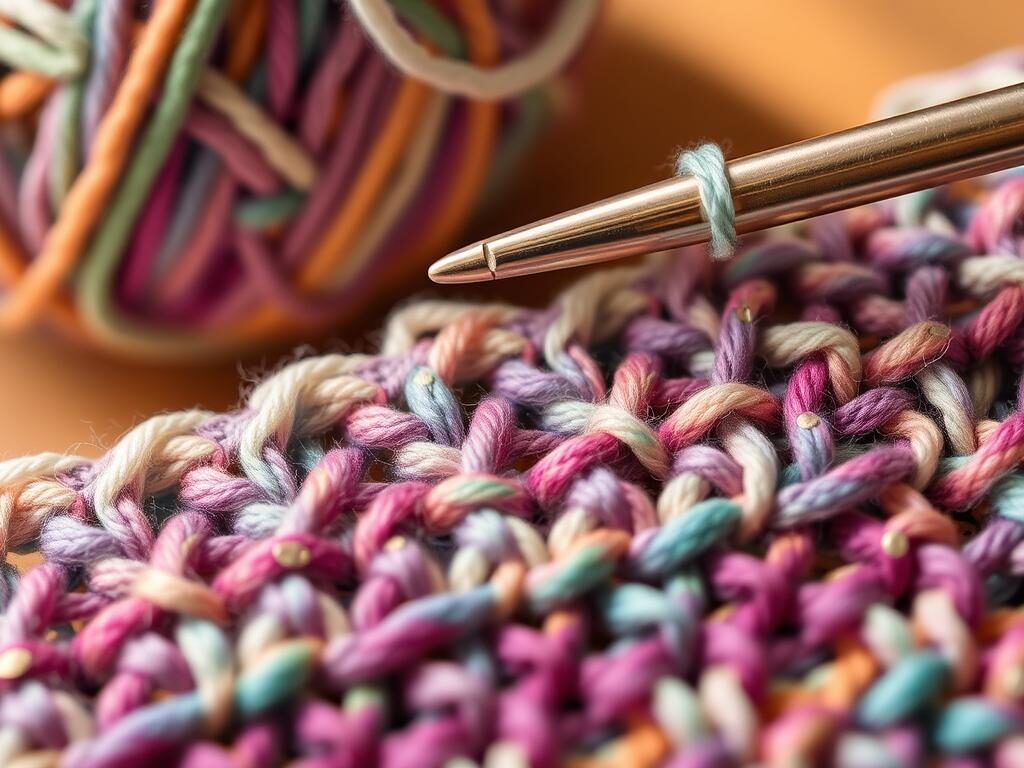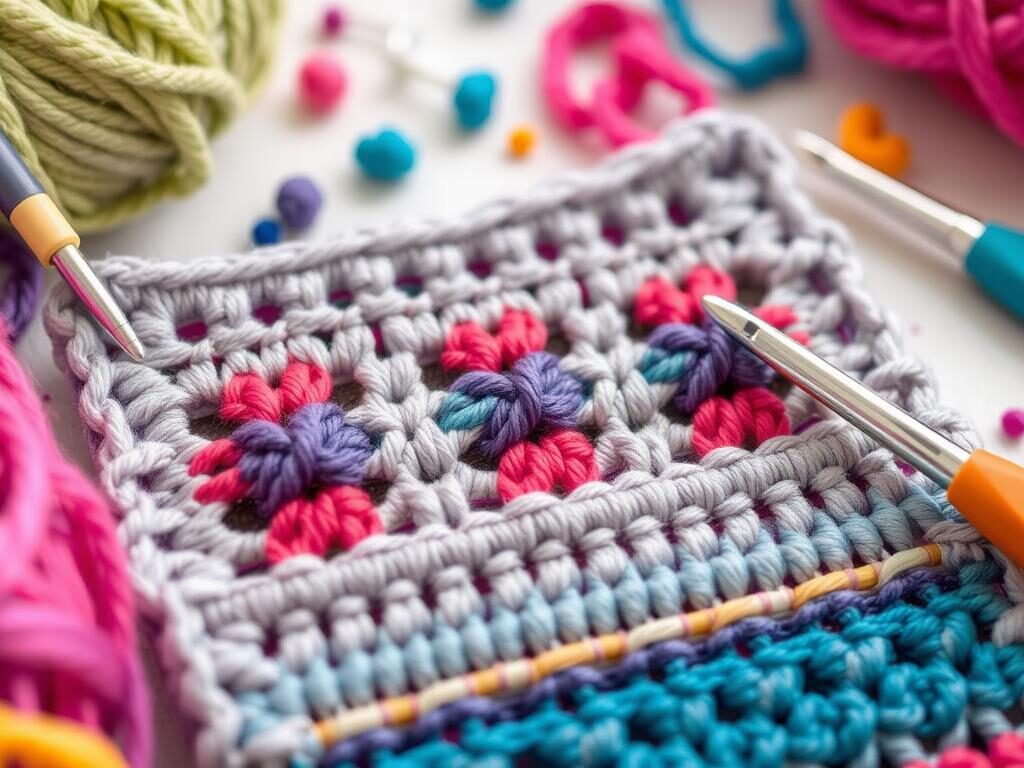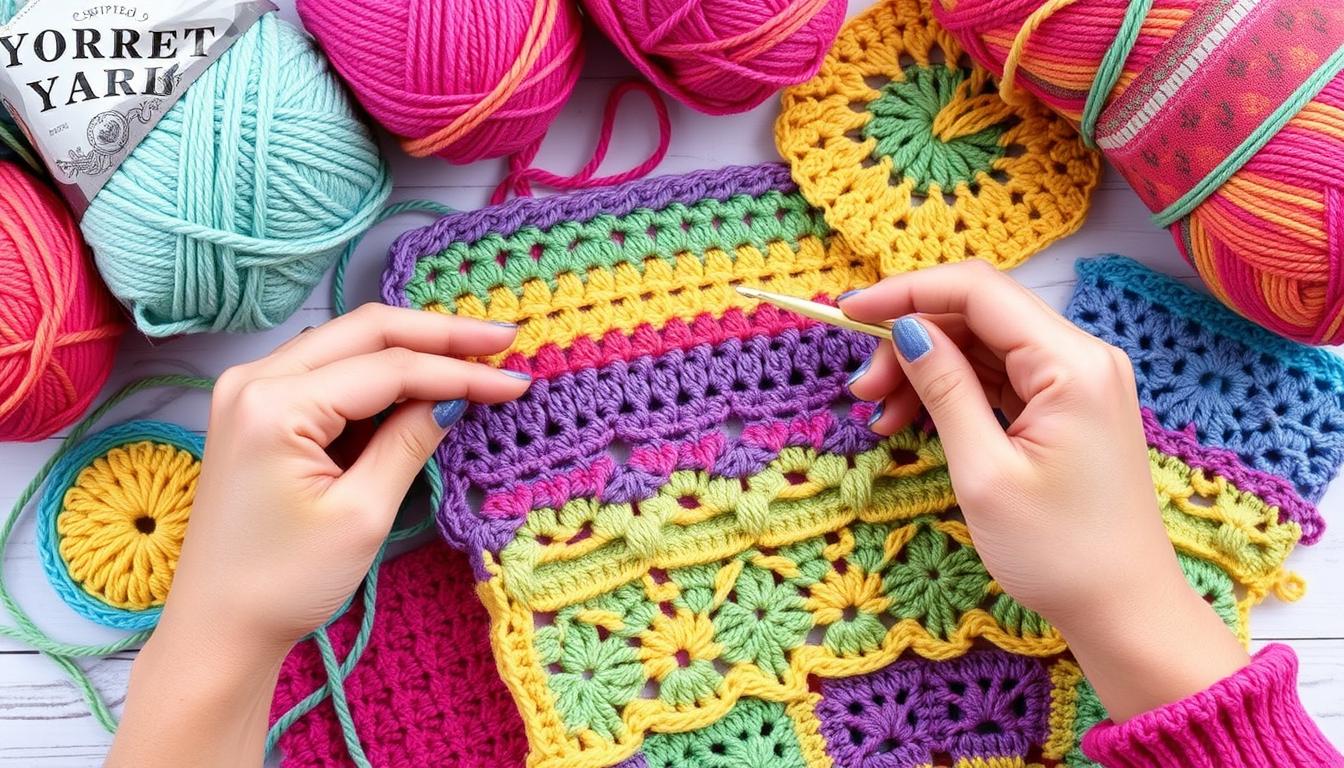How To Decrease in Crochet: Tips for Beginners
Crocheting is an art that allows for endless creativity, but understanding the technical aspects can be a challenge, especially for beginners. One key skill in mastering crochet is learning how to decrease stitches effectively. Whether you’re working on a cozy blanket or a stylish hat, knowing how to decrease in crochet is essential to achieve the desired shape and sizing. In this guide, we’ll explore various methods of crochet decrease stitches, including popular techniques like single crochet two together (sc2tog), half double crochet two together (hdc2tog), and double crochet two together (dc2tog). By the end, you’ll have the confidence to shape and size any crochet project with ease. Let’s dive into the world of crochet decreasing stitches and unlock new possibilities for your creations!
Key Takeaways
- Decreases are essential for shaping and sizing crochet projects, allowing you to create curves, tapered edges, and a more flattering silhouette.
- You can decrease in all basic crochet stitches, including single crochet, half double crochet, and double crochet.
- Common decrease techniques include sc2tog, hdc2tog, and dc2tog, where you work two stitches together to form one.
- The number of times you decrease per round or row depends on the pattern instructions.
- Decreasing stitches involves leaving the final step of the first stitch unfinished, working the next stitch, and then completing the final step for both stitches simultaneously.
Understanding Crochet Decreases
Crochet decreases are key to shaping your projects. They remove stitches, making your work narrower. Learning crochet decreases helps you create detailed designs.
What Are Crochet Decreases?
Crochet decreases reduce the number of stitches in your work. They are used for tailored looks and shapes. The main stitches for decreasing are single crochet and double crochet.
By decreasing stitches, you can change the size and shape of your crochet pieces. This is useful for sleeves, hat crowns, and more.
Why Are Decreases Important in Crochet?
Decreases are vital for several reasons. They help you crochet shaping for custom-fit items. They also ensure your projects are the right size.
Moreover, decreases are key in crochet garment construction. They shape the look and structure of your crochet pieces.
Mastering crochet decreases opens up more complex projects. It’s essential for making everything from sweaters to accessories.
Ready to learn more about crochet decreases? Let’s explore the techniques and how to use them in your next project!
How To Decrease in Single Crochet
Decreasing in single crochet is a key skill in crochet. The single crochet decrease, or sc2tog, combines two stitches into one. This reduces the number of stitches in your project. It’s crucial for shaping items like hats and blankets.
To do a single crochet decrease, start by inserting your hook into the first stitch. Then, yarn over and pull up a loop. Next, insert your hook into the next stitch and repeat the process. Finally, yarn over and pull through all three loops on your hook. This joins the two stitches into one.
When decreasing, it’s important to keep track of your stitches. This ensures your project stays the right shape and size. Use a pattern’s instructions for decreasing. Beginners might find it helpful to use a larger hook and light-colored yarn for better visibility.
Invisible Single Crochet Decrease
There’s also an invisible decrease technique in crochet. It’s worked into the front loops only, making the decrease less noticeable. This method is great for amigurumi, where a clean look is important.
To do the invisible decrease, start by inserting your hook into the front loop of the first stitch. Then, yarn over and pull up a loop. Next, insert your hook into the front loop of the next stitch and repeat. Finally, yarn over and pull through all three loops, just like the traditional decrease.
Choosing between the traditional sc2tog and the invisible decrease depends on your project and preference. The invisible decrease is best for amigurumi and round projects. The traditional sc2tog is better for blankets and garments where the decrease is visible.
Mastering single crochet decreases opens up a world of three-dimensional crochet projects. Whether you prefer the traditional sc2tog or the invisible decrease, knowing this technique is key. It lets you shape your crochet pieces with precision.
The Ultimate Beginner’s Guideto Learning is a great resource for expanding your crochet skills. It covers new techniques like single crochet decreases.
How To Decrease in Double Crochet
Decreasing in double crochet is similar to single crochet. To do a double crochet decrease (dc2tog), start a double crochet and leave the last step. Then, start another double crochet in the next stitch. Finally, yarn over and pull through all three loops on your hook. This combines the two double crochet stitches into one.
Double Crochet Cluster Decreases
You can also use double crochet cluster decreases. This involves working multiple double crochet stitches together, like a 4dc cluster. It’s great for dramatic decreases, especially in patterns like chevron designs.
To figure out how many stitches to crochet between decreases, use this formula: (Number of stitches at the end of decrease round – Stitches on current round) / Decrease number – 2. For example, to go from 24 to 18 stitches, work 2 stitches between each decrease.
Where you place decreases matters for the look. Working them at the end of rows often looks better. Having a good formula for decreases is key for designers or those tweaking patterns.
The book “Crochet Every Way Stitch Dictionary” by Dora Ohrenstein is a great resource. It shows stitches that can be increased and decreased. It includes charts, written instructions, and samples.
Invisible Crochet Decreases
As a crocheter, I’ve found a great technique: invisible crochet decreases. It’s different from usual decreases. It makes your work look almost seamless, perfect for amigurumi projects where you want a smooth look.
To do an invisible decrease, you insert your hook through the front loops of two stitches. Don’t yarn over in between. Then, work through the loops to join the stitches. This method makes the decrease almost invisible, giving your work a clean finish.
- The tutorial shows 6 steps to do the invisible decrease stitch.
- This stitch is great for amigurumi and other crochet items like slippers and hats.
- It makes your fabric look cleaner and less dense than usual decreases.
- Keep your tension even and don’t stretch the stitches when using this technique.
- For more complex decreases, you can use it over three or four stitches.
This technique is surprisingly easy to learn and use. Even with years of crochet experience, I was new to it. But once I tried it, I loved how it made my amigurumi look professional.
Keep in mind, the success of this technique depends on the yarn. Some yarns might be harder to work with. But with practice, you’ll get the hang of it and improve your crochet.

“The invisible decrease is surprisingly easy to learn and creates a clean, seamless look in your crochet projects, especially for amigurumi and stuffed items.”
Whether you’re new to crochet or have been doing it for years, try the invisible crochet decreases technique. It’s a big improvement for anyone wanting to enhance their crochet skills.
How To Decrease in Crocheting
Decreasing in crochet is key to shaping your projects. It works for single crochet, double crochet, and more. You join two stitches together to make a single one, creating a narrower shape. Learning crochet decrease techniques opens up a world of designs, from fitted clothes to cute amigurumi.
The invisible decrease is a common method. It makes a seamless join, ideal for clean finishes. You can use it with many stitches, making it very useful.
To do an invisible decrease in single crochet, start with the first stitch as usual. Then, insert your hook into the next stitch, yarn over, and pull through both. This leaves a single stitch, reducing the count without a visible line.
As you get better at decreasing in crocheting, it becomes easier. With practice, you’ll shape your projects with precision. Your work will look professional.
- Understand the purpose of decreases in crochet
- Learn the step-by-step process for executing invisible decreases
- Practice decreasing in various crochet stitches, such as single crochet, double crochet, and treble crochet
- Experiment with different decrease techniques, like the double crochet decrease and the crochet cluster decrease
- Incorporate decreases into your crochet projects to create tapered, fitted, or sculpted designs
Consistent practice is the secret to mastering how to decrease in crocheting. With time and effort, you’ll shape your crochet projects like a pro!
Positioning Decreases in Your Projects
When you crochet, where you put decreases matters a lot. It affects how your project looks and fits. Whether it’s a sweater, amigurumi, or home decor, knowing how to place decreases is key.
Decreasing at the Beginning and End of Rows
Decreases at the start and end of rows help shape your project. This is great for hats, sleeves, and necklines. It narrows your project, giving it the right shape.
Decreasing in the Middle of Rows
Decreases in the middle shape the center of your project. This is useful for sweater bodies and amigurumi. It makes your project look more fitted and structured.
Where you put your decreases in crochet matters a lot. Always follow the pattern’s instructions. This ensures your project turns out right.
| Technique | Effect | Common Applications |
|---|---|---|
| Decreasing at the Beginning and End of Rows | Creates tapered edges and shaping | Hats, sleeves, necklines |
| Decreasing in the Middle of Rows | Helps shape the center of a piece | Sweater bodies, amigurumi designs |

“The placement of decreases in your crochet work can have a significant impact on the overall shaping and appearance of your project.”
Reading Crochet Patterns with Decreases
As a crocheter, it’s key to know how to read patterns with decreases. Patterns use abbreviations like “dec,” “sc2tog,” or “dc2tog” for decreases. They also tell you how many times to repeat a decrease and where to place them.
Learning these techniques lets you confidently do decreases. This way, you’ll get the look you want in your crochet projects.
Understanding crochet pattern abbreviations is crucial. These abbreviations tell you the stitches and techniques, including decreases. Knowing them helps you follow the pattern right and get great results.
Patterns also guide you on where to put decreases. They might say to decrease at the start and end of rows or in the middle. Following these directions helps you shape your crochet projects, like hats, sweaters, or amigurumi, just right.
| Crochet Decreases | Description | Abbreviation |
|---|---|---|
| Single Crochet Decrease | Work 2 single crochet stitches together | sc2tog |
| Double Crochet Decrease | Work 2 double crochet stitches together | dc2tog |
| Half Double Crochet Decrease | Work 2 half double crochet stitches together | hdc2tog |
Mastering reading crochet patterns with decreases opens up more projects. With time and practice, you’ll get better at doing decreases in your crochet.
“The key to successful crocheting is understanding how to read and follow pattern instructions, including those involving decreases.”
Conclusion
Learning how to decrease in crocheting is key to making your projects look great. You’ll get better at using crochet decrease techniques like single crochet and double crochet. This will help you make things like clothes, toys, and decorations that look professional.
It’s important to follow pattern instructions and practice your crochet decreases. This will help you get better at crocheting. Knitter’s Pride offers tools like crochet hooks to help you learn.
Whether you’re new to crocheting or have been doing it for a while, knowing how to use crochet decrease techniques will make your projects better. This article will help you learn how to shape your crochet creations. You’ll be able to make things that show off your skills and style.
FAQ
What are crochet decreases?
Crochet decreases are a way to remove stitches from your work. This helps shape and size your projects. Unlike increases, which add stitches, decreases make your work narrower or tapered.
Why are decreases important in crochet?
Decreases are key for shaping crochet pieces. They help create sleeves, hat crowns, and the overall look of a garment. By decreasing stitches, you can shape your fabric and add depth to your designs.
How do you decrease in single crochet?
To decrease in single crochet, you work two stitches together. This is called a single crochet decrease (sc2tog or sc dec). Start by inserting your hook into the first stitch, then yarn over and pull up a loop.
Next, insert your hook into the next stitch, yarn over, and pull up another loop. Finally, yarn over and pull through all three loops on your hook. This joins the two stitches into one.
How do you decrease in double crochet?
For a double crochet decrease (dc2tog), start a double crochet stitch but don’t finish it. Then, begin the second double crochet stitch in the next stitch.
Finally, yarn over and pull through all three loops on your hook. This joins the two double crochet stitches into one.
What is an invisible crochet decrease?
The “invisible” decrease technique makes your work almost seamless. To do this, insert your hook through the front loops of two stitches without yarning over in between. Then, work through the loops to join the stitches.
This invisible decrease is great for amigurumi projects. It helps keep your work smooth and continuous.
Where should I position decreases in my crochet projects?
Decreases are often placed at the start and end of rows for tapered edges. Decreasing in the middle of rows shapes the center of a piece. Always follow the pattern instructions for where and how many decreases to work.
This ensures your project has the right shape and look.
How do I read crochet patterns with decreases?
When using crochet patterns with decreases, get familiar with the abbreviations and terms. Patterns might use “dec,” “sc2tog,” or “dc2tog” to show a decrease. They may also tell you how many times to repeat a decrease or where to place them.
Source Links
- How to Crochet Decrease in Basic Stitches – https://www.thesprucecrafts.com/how-to-decrease-in-crochet-4002866
- How to Single Crochet Decrease (sc2tog) – https://sarahmaker.com/single-crochet-decrease/
- How to Decrease in Crochet? – https://www.dutchlabelshop.com/en_us/blog/how-to-decrease-in-crochet-a-step-by-step-guide/
- CAL: Crochet Increase and Decrease – https://www.1dogwoof.com/cal-increasing-and-decreasing/
- 15 different detailed Ways on How to Decrease in Crochet — Pocket Yarnlings — Pocket Yarnlings – https://www.pocketyarnlings.com/blog/ways-on-how-to-decrease-in-crochet
- How to Decrease in Single Crochet – https://crochettoplay.com/how-to-decrease-in-single-crochet/
- Sc2tog or Invisible Decrease? – https://crochettoplay.com/sc2tog-or-invisible-decrease/
- Chapter 5: Decreasing – Club Crochet – https://clubcrochet.com/lessons/chapter-5/
- Double Crochet Decreases | Crochet.com – https://www.crochet.com/learning-center/sc2tog-and-other-decreases/double
- How to evenly space increases and decreases in crochet – Dora Does – https://doradoes.co.uk/2021/01/16/how-to-evenly-space-increases-and-decreases-in-crochet/
- How to Increase and Decrease in Crochet – https://tlycblog.com/crochet-increase-and-decrease/
- How to Crochet the Invisible Decrease Stitch – https://www.crystalized-designs.com/how-to-crochet-the-invisible-decrease-stitch/
- Normal & Invisible Decreases: How to work & the difference between them – A Purpose and A Stitch – https://apurposeandastitch.com/the-invisible-decrease/
- How to Decrease Crochet | Mitered Square with Decrease – Kickin Crochet – https://kickincrochet.com/how-to-decrease-crochet/
- How to Crochet an Invisible Decrease in 4 Basic Stitches – MyCrochetory – https://mycrochetory.com/how-to-crochet-an-invisible-decrease/
- Understanding What is DC Decrease in Crochet: A Beginner’s Guide – Khe-Yo Crochet – https://www.kheyo.com/understanding-what-is-dc-decrease-in-crochet-a-beginners-guide/
- Crochet Decrease Stitch Tutorial to Learn How to Crochet Basic – https://1001patterns.com/how-to/decrease-in-crochet/
- How to Read Amigurumi Patterns – https://www.allaboutami.com/howtoreadamigurumipatterns/
- Understanding Is Tog a Decrease in Crochet? A Comprehensive Guide – Khe-Yo Crochet – https://www.kheyo.com/understanding-is-tog-a-decrease-in-crochet-a-comprehensive-guide/
- How to Read a Crochet Pattern – https://www.thenicolechase.com/blog/how-to-read-a-crochet-pattern
- How to Increase and Decrease in Crochet – https://oombawkadesigncrochet.com/how-to-increase-and-decrease-in-crochet/
- Mastering the Basics: How Do You Do DEC in Crocheting? – Khe-Yo Crochet – https://www.kheyo.com/mastering-the-basics-how-do-you-do-dec-in-crocheting/

